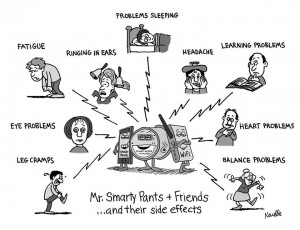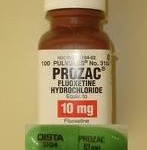This reminded me of a rather more literate email from a professional scientist – one of the many who happen to own Guardian Energy Eggs – that included the comment – “I believe you are so far ahead of the current scientific paradigm it would be impossible to discuss your work with colleagues as this would, most likely, damage my career. Unfortunately much of science is still more ‘religious’ than truly scientific . . .“
This is a sentiment we often hear repeated by scientifically-trained friends and colleagues who feel somewhat disillusioned by the not-inconsiderable gap between academically-approved forms of mechanistic thinking and millions of people’s experienced reality.
Fortunately, more and more organizations are respecting people’s experiences rather than just buying into the loudest ‘voice in the room,’ which, as far as microwave radiation (wifi) is concerned, is currently the collective one with links (involving vast amounts of money) to the telecoms industry. 
In April 2016, the mayor of Haifa, Yona Yahav, announced that the city, the third largest in Israel, would immediately be removing Wi-Fi from its schools, saying, “When there is a doubt, when it comes to our children, there is no doubt.” Obviously, a man who listens to people’s real-life experiences rather than toeing the ‘scientific,’ (read ‘industry’), party line . . .
Dafna Tachover, an attorney with offices in Israel and New York, said, “Electro-Sensitivity is an epidemic and not three percent of the population. We are now in the double digits in terms of ES. The public must be told. Wi-Fi in schools is a disaster and as a person who spends two to four hours every day on the phone with people and children who got sick, with many contemplate committing suicide, I urge you all to be uncompromising. The truth, and all of it must be told. Continued good luck to us all and thanks to anyone out there who stands up to evil and stupidity.”
Even as far back as 2007, the German government recommended that people should keep their exposure to radiation from Wi-Fi ‘as low as possible’ by choosing “conventional wired connections.’ The government’s official radiation protection body also advised German citizens to use landlines instead of mobile phones, and warned of “electrosmog” from a wide range of other everyday products, from baby monitors to electric blankets . . .
And, in the Freiburg Appeal (2002), over 1000 doctors signed a public appeal about the dangers of microwave radiation (wifi). Since then there have been twelve more appeals by doctors and scientists to the authorities to limit people’s exposure to microwave radiation pollution. Unfortunately, since then, the public’s exposure to microwave radiation has massively increased. This has naturally resulted in increased
problems falling asleep and staying asleep, chronic fatigue, headaches, migraine, vertigo, tinnitus, unhealthy blood pressure levels and arrhythmias, concentration and memory problems, learning and behavioural disorders and a more frequent incidence of ADHD among children.
Numerous studies of independent scientists have now confirmed many of these observations made by physicians.
Meanwhile, in the real world – as opposed to the worlds of scientific debate and commercial agendas – thousands of people have been using the Guardian Energy Egg. Several hundreds of Energy Egg owners have even kindly provided us with some feedback . . .
“I wanted to let you know I have been sleeping much better (as other people report) since getting the Guardian Energy Egg . . .  people are also commenting on how much energy I have now” Brigitte G, UK
people are also commenting on how much energy I have now” Brigitte G, UK
“My energy is dramatically better. The Guardian Energy Egg is doing a great job . . . I really appreciate it!” Mark F, NZ
“The Guardian Energy Egg is definitely having a positive effect – I feel generally better balanced and slept really well. Thanks so much!” Jane S, UK
Basically, commercial politics – governments are being paid £$billions by the telecoms industry – notwithstanding, there are those who rely on theories and those who trust their real-life experiences. Having seen tens of thousands of Life Energy Solutions clients recover their health, I have no doubt it is the latter group that has by far the best prognosis for successful recovery from wifi-induced symptoms and for maintaining long-term well-being.



